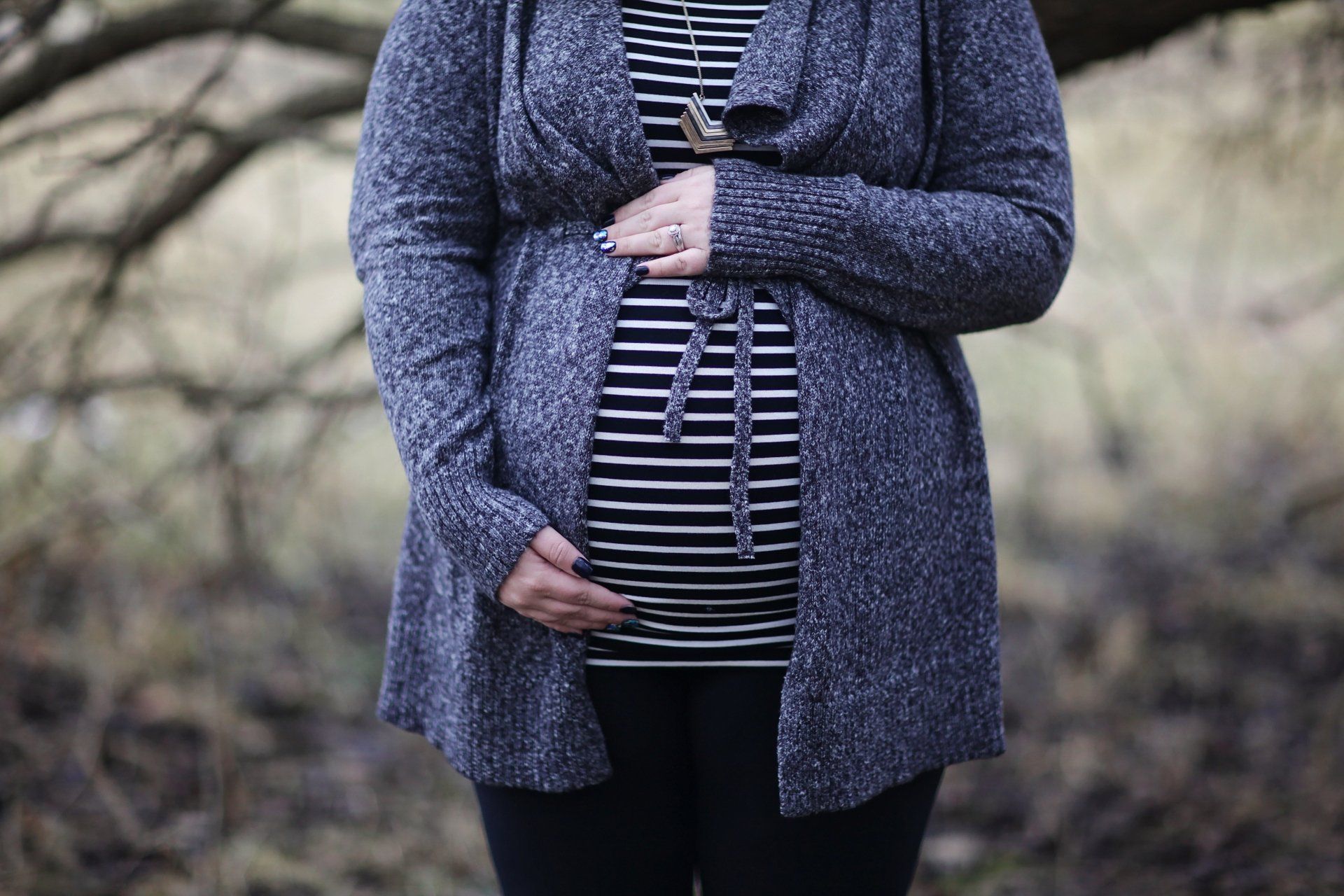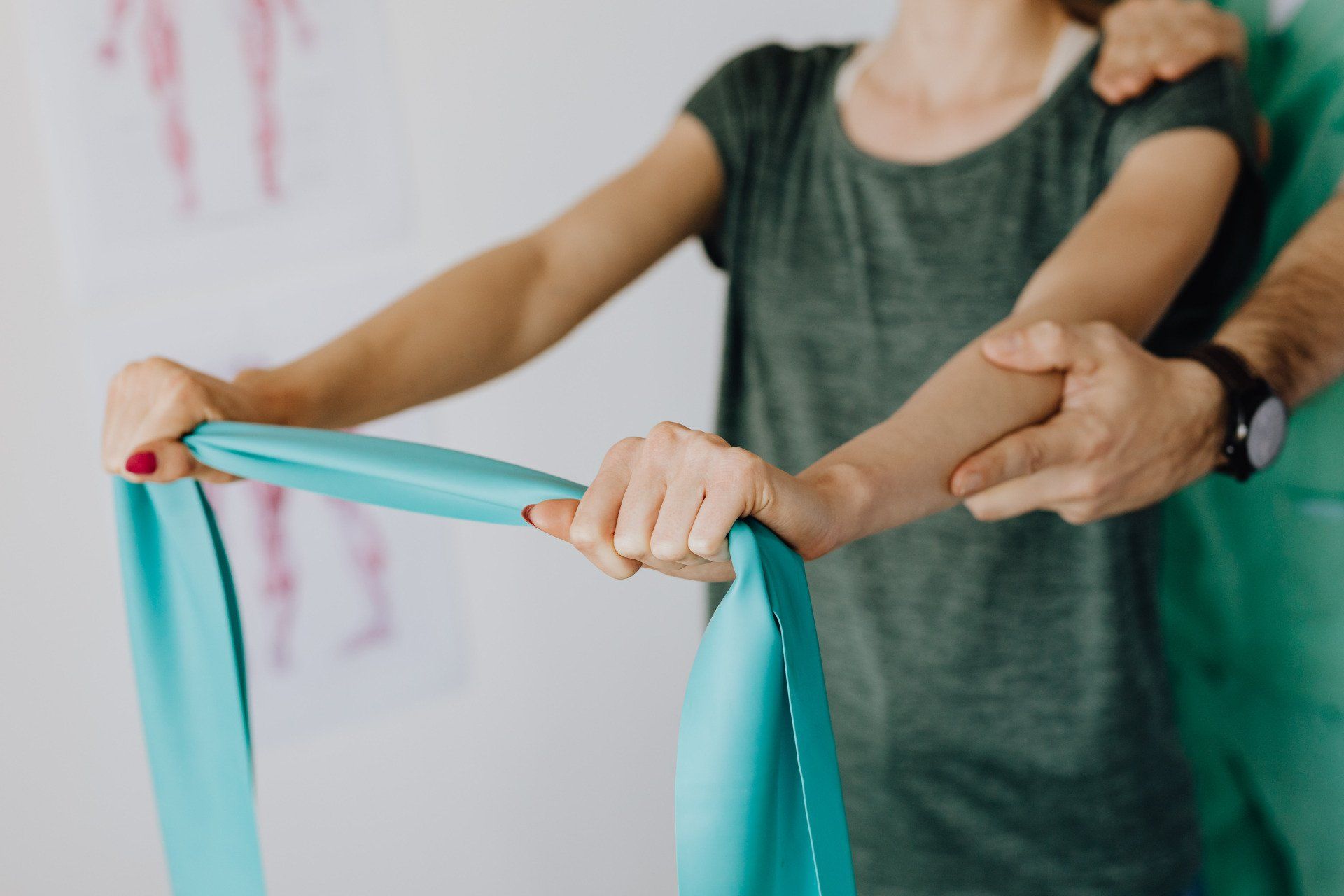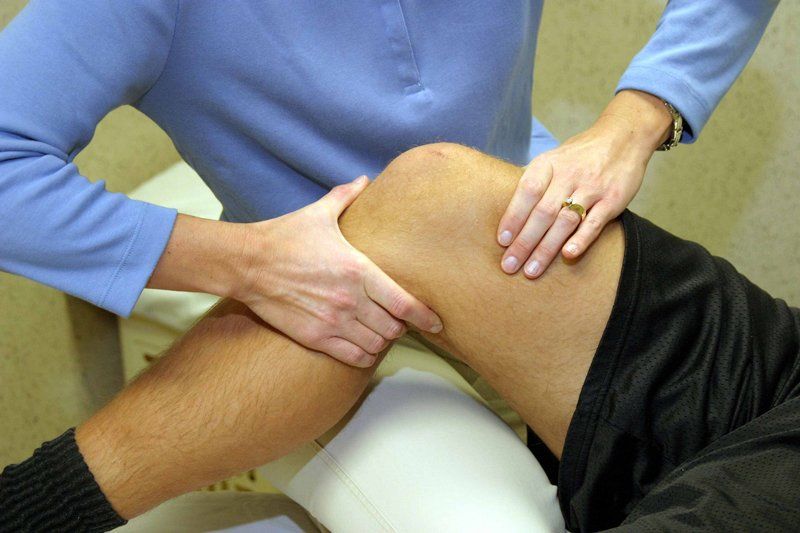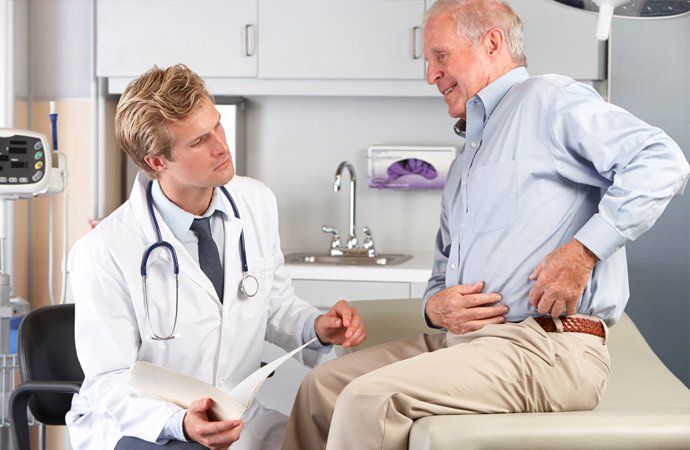Surgery
Blog

08 Mar, 2021
"I had a c-section, so my pelvic floor is totally fine! But I am leaking urine when I cough or sneeze, what’s up with that?” Time and time again, I come across patients that are surprised by the pelvic floor dysfunctions they have sustained after delivery, even though they delivered their baby via cesarean versus vaginally. It is well-known amongst most pregnant women where the pelvic floor muscles are located, and that if they are delivering vaginally, there is a direct link to the pelvic floor being impacted. But when the delivery is made via cesarean, where is that connection? In a review article supported by OBGYNs, they acknowledged the effect on these muscles during the prenatal period. “This controversy fuels the debate about whether or not women should be offered the choice of elective caesarean delivery to avoid the development of future pelvic floor disfunction. It has been demonstrated that pregnancy itself, through mechanical changes of the pelvis and hormones, can be a significant risk factor for these dysfunctions; urinary incontinence and genital prolapse’’. Although you have or are about to have a c-section, let’s not discount the last 9-10 months that you have carried your baby. Actually, let’s rephrase that — your pelvic floor muscles have carried your baby! These muscles are located at the bottom end of your pelvis, and act like a hammock to various pelvic organs including your bladder, rectum, and your uterus. Pregnancy is already associated with a decrease in pelvic and perineal strength and endurance. As the pregnancy progresses, these muscles bear increased stress or load from the baby; therefore, putting them at risk for weakening, tightening, or even becoming overactive. Following the delivery of your beautiful baby, these muscles may or may not return to their normal muscle length to provide the support and function they are meant for. This is where we end up with pelvic floor dysfunction following delivery, even with a c-section! Makes sense? Now, let’s talk about some facts and figures. Some of the most common complications postpartum following a c-section include back pain, bowel and bladder dysfunction, and scar tissue/adhesions. Women are 2-5x more likely to experience lower back and pelvic girdle pain following a c-section versus a spontaneous vaginal delivery. As well, bowel and bladder dysfunction is significant higher after a c-section in the postpartum period. These dysfunctions can include urinary or fecal incontinence, frequency, urgency, and/or pelvic organ prolapse. There are also multi-layer adhesions that occur in the cesarean scar (in close to 50% of women) that can increase the risk for miscarriage, uterine rupture in the future, increased difficulty with future labour and deliveries, and potentially a risk for future bowel obstructions. So do I have some good news? Of course! Studies have shown that physical therapy is a helpful tool in the recovery and rehab after a c-section. How can Pelvic Floor Physical Therapy help? Scar mobilization We can perform scar tissue mobilization on and around your c-section scar to help break apart the adhesions that have formed since your delivery. Whether you are 8 weeks postpartum or 8 months postpartum, this can be helpful. Pelvic floor muscle retraining Retraining your pelvic floor after childbirth has many benefits; most importantly for re-establishing the support needed for your pelvic organs to ensure proper bladder and bowel function. As a pelvic floor physical therapist, we are specialized to help you retrain these muscles correctly (this doesn’t just mean kegels!). Back to exercise and activity From the stretching of your abdominals during pregnancy, to the overbearing weight on your hips, lower back and pelvis, we can safely guide you through exercises to help stretch and mobilize the muscles that may be hindering your way back to exercise and activity. Core Stabilization Exercises Similar to the above point, we are trained to provide appropriate core exercises for both the pregnancy and postpartum period. It may be challenging and/or difficult to connect with your core during this time, therefore we can help you target the right muscles safely and appropriately. Bladder and/or Bowel training Other than re-training your pelvic floor muscles, as a pelvic floor physical therapist, we can educate you on how to retrain your bladder and bowels, manage constipation and recognize signs of an overactive or weak bladder, that are sometimes common during this time. If you would like to consult with one of our pelvic floor physical therapists, feel free to reach out to either our Penfield or Pittsford locations. Both in-person and telehealth consultations are available ! References Fonti, Y., Giordano, R., Cacciatore, A., Romano, M., & La Rosa, B. (2009). Post partum pelvic floor changes. Journal Of Prenatal Medicine, 3(4), 57-59. Stone, J., Skibiski, K., Hwang, S., & Barnes, C. (2020). Physical Therapy in Addition to Standard of Care Improved Patient Satisfaction and Recovery Post-cesarean Section. Academy Of Pelvic Health Physical Therapy, APTA, 45(1), 10-19. Wasserman, J., Steele-Thornborrow, J., Yuen, J., Halkiotis, M., & Riggins, E. (2021). Chronic caesarian section scar pain treated with fascial scar release techniques: A case series. Journal Of Bodywork And Movement Therapies, 20(4), 906-913

12 Feb, 2021
In 2018 alone, 460,000 American’s had surgery to repair a torn rotator cuff, and in 2023, that number is expected to climb over 600,000 patients (iData Research). With the rising incidence of rotator cuff repairs in this country as well as the ever increasing cost of healthcare, there has been an increased demand placed on rehab professionals and patients alike to better understand and streamline the rehab process to achieve better outcomes. To better understand the post-op recovery and timeline following rotator cuff repair, let's dive into a brief anatomy lesson. Your rotator cuff (no, not rotary cup or rotator cup) is a group of 4 muscles and tendons in your shoulder. The cuff acts in harmony to both move and stabilize your joint. These muscles, the supraspinatus, infraspinatus, subscapularis, and teres minor act as a force couple to approximate, or “suck” the head of your humerus (ball) into the glenoid fossa of your shoulder blade (socket). Simply put, as your shoulder lifts utilizing a majority of the force from the large deltoid muscles, the 4 muscles of your rotator cuff work to keep the ball and socket joint in alignment. Additionally, these muscles also have isolated movements to rotate your shoulder both directions. Injuries possibly requiring surgical repair to the rotator cuff commonly happen in one of two main ways: Chronic tears : When the above force couple does not work, whether due to a.) poor anatomy b.) weakness or c.) overuse , the tendons of the rotator cuff (most frequently supraspinatus) become frayed and dysfunctional. This hits a critical point where pain and loss of motion, strength and function are diminished. Acute injury : When a person falls on an outstretched arm, falls on an arm stuck behind them, or performs a hard lifting task the rotator cuff cannot handle, a traumatic acute tear to the muscle can occur. These tears can range from small to full thickness tears, and can accompany any of the 4 muscles. These injuries typically happen in adults in their 60's-80's, with those ages accounting for 78.3% of all full thickness tears. Surgery to repair these damaged muscles will be recommended after a failed course of conservative care using physical therapy, active rest/recover and possible injections/medications. So, you’ve had the rotator cuff surgery…now what? Let’s quickly answer the first question everyone always has: how long will the recovery take? It depends. If I had a crystal ball, I’d know exactly how long the recovery is going to take and I’d have a boatload of money. I still don’t have either. That being said, the typical recovery time for patients falls around 3–5 months. The main goals of recovery from rotator cuff surgery are: Decrease postoperative pain and swelling Protect the repaired tissues Restore full passive range of motion (ROM) Restore full active ROM Build strength of cuff and upper extremity musculature Improve biomechanics of upper extremity Regain full functional use of involved extremity With the help of your physical therapist, this recovery will go in chronological order, and will follow a guided protocol with the input of your surgeon and treating therapist. Most rehab protocols are standard and follow the same guidelines, however surgeon and PT preference as well as specific tissues repaired and patient recovery factors will have an impact on timeline. Stage 1: 0–6 weeks Decrease postoperative pain and swelling Protect the repaired tissues Restore full passive range of motion (ROM) Beyond protecting the surgically repaired tissues, the single most important part of achieving full recovery is to establish pain free and full PASSIVE ROM within the first 6 weeks. This means seeking PT services immediately following your surgery. Passive meaning no moving of the shoulder yourself - this is done with manual techniques by the treating therapist, and through passive exercises prescribed. As known shoulder guru Mike Reinold states, “It is extremely easy to lose motion following surgery. This is one of the common “rookie mistakes” I see with new PT’s. Passive range of motion should be initiated immediately following surgery in a gradual and cautious fashion. Studies have shown that passive range of motion into flexion and external rotation actually decreases strain in the rotator cuff repair [and aide in a more efficient recovery].” Stage 2: 6–10ish weeks Maintain full passive range of motion (ROM) Restore full active ROM Build strength of cuff and upper extremity Once full passive ROM is established and ~6 weeks post-op, you can begin to actively use your arm to regain your active ROM. In this phase, it is important to maintain the passive ROM you have achieved. Subsequently, you will gain active range of motion of the shoulder and strength of the isolated rotator cuff, scapular muscles and total upper extremity as tolerated. Stage 3: 10+ weeks Maintain ROM and strength of cuff and upper extremity Improve biomechanics of upper extremity Regain full functional use of involved extremity This is where all the fun begins. Once motion and baseline strength are established and the surgery is healed, it is time to train what your shoulder needs to function in your daily life. This stage of recovery is geared at improving the biomechanics of your shoulder in order to allow it to respond to the specific demands you will place on it (albeit work, sport, recreation, etc.). This stage of recovery may look different for say, a competitive baseball player vs. a retired passive individual. This stage is based on the patient's specific functional demands of the shoulder. However, the same principles remain for all patients: the body will adapt to the stresses we apply to it. Therefore, we must train this area to react and support the functional requirements it will need to prevent this injury from reoccurring. To wrap it up, think basic: get to PT immediately after surgery. Start passive motion, move to active motion, and once moving fully, build strength and function of the shoulder as tolerated. As always, the recovery and therapy process differs for every patient, this is just an overarching breakdown of the rehabilitation process. For specifics on timeline, exercises to perform, and medical questions, please consult with your physician, surgeon and physical therapist

21 Jun, 2013
Osteoarthritis is one of the most common knee conditions, with an estimated 9 million sufferers in the United States alone. In addition to this degenerative disease, meniscal tears are quite common in older adults. The meniscus – which cushions both the outer and inner edges of the knee – gets worn over time and significant use. Therefore, meniscal tears are quite common in older adults, especially those who suffer from osteoarthritis. Osteoarthritis patients who’ve suffered a meniscal tear often undergo corrective surgery, followed by a physical therapy program for rehabilitation. However, some clinicians argue that patients can experience the same benefits by undergoing corrective physical therapy without the need for surgery. Researchers from Brigham and Women’s Hospital, Washington University and other orthopedic centers decided to conduct a study with the aim of demonstrating if patients who received just physical therapy were able to function as well as patients who opted for surgery and post-operative physical therapy. Researchers conducted a randomized and controlled trial that involved patients over 45 years of age with a meniscal tear and mild-to-moderate osteoarthritis. All 351 patients were randomly assigned to two groups: one group consisted of surgery and post-operative physical therapy, while the other group opted for physical therapy alone. At the six month mark, researchers concluded that there was little difference in physical function outcomes between patients in the first group and patients in the second group. However, the study reveals an interesting point at the 12-month mark, when researchers find that 30% of patients who were assigned to physical therapy alone had to undergo surgery. This interesting study may reveal that while physical therapy can provide short-term relief from meniscal tears and osteoarthritis, patients might require surgery in order to enjoy long-term improvements in their physical function outcomes. So what does this mean for clinicians? Quite simply, a combination of surgery and physical therapy might provide the best solution – both short-term and long-term – for patients who have a meniscal tear and mild-to-moderate osteoarthritis. This will need to be at the clinician and patient’s discretion, as the study did underscore how 70% of physical therapy-only patients did not need surgery at the 12-month mark. However, the study is successful in pointing out that for many patients, surgery is absolutely necessary to long-term healing and positive physical function outcomes. As reported in the March 2013 issue of The New England Journal of Medicine.

22 Apr, 2013
You may feel younger than ever – but your hips might indicate otherwise. You want to live an active lifestyle, not remain sitting indoors on the couch wishing you could engage in the physical activities you love. If this sounds familiar to you, you might be considering a hip replacement. But perhaps you’re a little wary about what the process involves. Maybe you’re worried about undergoing an invasive surgery, or you’re concerned about what the entire process entails. You’re in luck – because this article will detail exactly what you need to know about what’s involved in getting a hip replacement. Whether this is your first time looking into a hip replacement surgery or the night before your big procedure, here’s everything you need to know about hip replacements, and what you can expect from the process. What is a Hip Replacement, and Why Do I Need It? To put it simply, a hip replacement is an operation that involves replacing the ailing hip joint with an artificial one. There are many reasons why the hip joint can become damaged, including injury from physical activities, bone tumors, degenerative diseases, and the natural aging process, among others. One of the biggest reasons why people get their hips replaced is due to osteoarthritis, which is a degenerative disease that afflicts the cartilage that connects the two ends of the hip bones to the joint. When the cartilage breaks down, the hip bones begin to rub together, which causes a significant amount of pain and discomfort. Another common reason why people need hip replacements includes rheumatoid arthritis, which is a disease that makes the body’s immune system attack the body’s joints. When this occurs, the besieged joint becomes swollen, painful, and stiff. If you’re suffering from any of these diseases or conditions, and they’re interfering with the quality of your life, you might want to consider undergoing a hip replacement surgery. What You Need to Know About Hip Replacements The decision to get a hip replacement should not be taken lightly. You should carefully consult with your doctor to determine how a hip replacement will improve the quality of your life. Many factors can prohibit your ability to undergo the surgery, including the quality of your health. Therefore, be sure to be open with your doctor about your medical history, as this can be fundamental to your decision about undergoing hip replacement surgery. If you’re still considering hip replacement surgery, be sure to talk to your family as well as your doctor to determine if it’s the right decision for you.
Complete rehabilitation and hands on attention to our patients are the cornerstone building blocks of Agape Physical Therapy. Our physical therapy professionals are completely invested in restoring, improving, and reclaiming your movement to maximize your wellness and performance.
© 2024
All Rights Reserved | Agape Physical Therapy
© 2024
All Rights Reserved | Agape Physical Therapy
Made with ♥ by Vessel Digital Marketing
